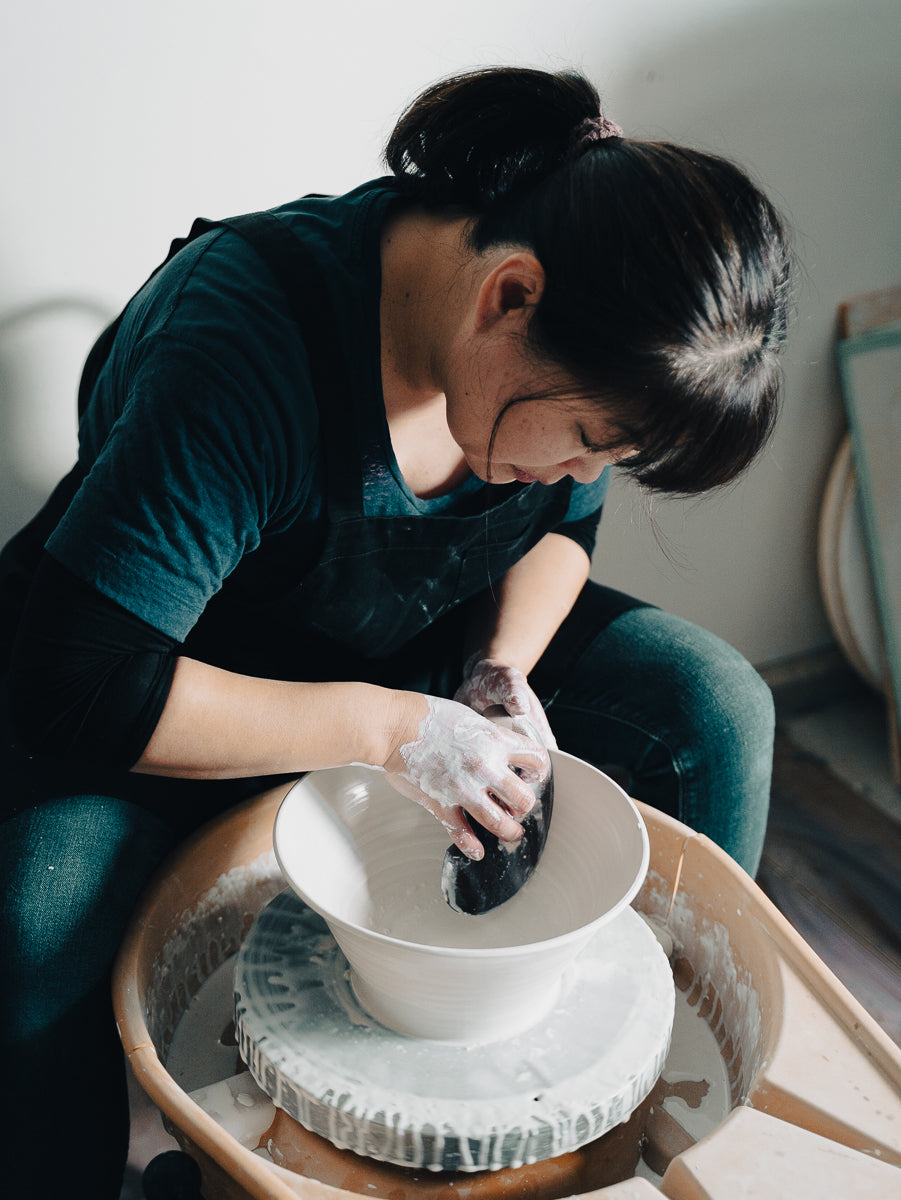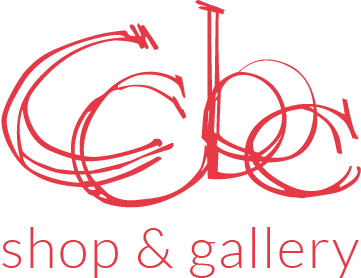
ccbc's artist interview series with atusko yoshimura
Share
The CCBC’s Artist Interview Series is published on the 15th of each month. Our intention is to connect readers with the incredible artists in our space, consider craft through the lens of an artist, and encourage people in their own journey with craft.

Artist Biography: Atsuko Yoshimura grew up in Japan and immigrated to Canada in 1996. She has studied ceramics extensively in Japan and Canada. After arriving in Vancouver, she enrolled in the Fine Arts program at Langara College, then received her Bachelor of Fine Arts from Emily Carr University of Art and Design in 2006. This dual cultural exposure shaped her unique aesthetic, blending the elegance of Japanese tradition with the inspiration drawn from the dynamic west coast. Atsuko has produced ceramic work for galleries, craft shows and restaurants around Vancouver. Currently, she creates ceramics from her home studio in Vancouver.
Could you tell us briefly what you make?
I create porcelain and stoneware pottery, primarily using the potter’s wheel. My work is influenced by Japanese aesthetics and emphasizes simplicity, balance, and the natural beauty of materials. My porcelain pieces have clean forms, often accented with subtle throwing marks that add depth to their smooth surfaces. Some have delicate  carved patterns, pierced rims, or altered edges for added detail. I use clear glaze on porcelain to highlight its texture and translucency. In contrast, my stoneware has a more grounded feel, with an earthy clay body and glazes that enhance its warmth. Each piece is created and fired in an electric kiln in my home studio in Vancouver. I thoughtfully design my work to be both useful and beautiful, bringing joy to daily life.
carved patterns, pierced rims, or altered edges for added detail. I use clear glaze on porcelain to highlight its texture and translucency. In contrast, my stoneware has a more grounded feel, with an earthy clay body and glazes that enhance its warmth. Each piece is created and fired in an electric kiln in my home studio in Vancouver. I thoughtfully design my work to be both useful and beautiful, bringing joy to daily life.
 marks left by my hands make each piece unique. These marks tell a story about the connection between the maker and the material. Recently, I’ve been challenging myself by making sculptural work using wheel-thrown porcelain. While functional ceramics are still at the centre of my work, I am interested in capturing movement and expression in pieces that are not meant for everyday use. This has helped me try new techniques and materials expanding my creative range.
marks left by my hands make each piece unique. These marks tell a story about the connection between the maker and the material. Recently, I’ve been challenging myself by making sculptural work using wheel-thrown porcelain. While functional ceramics are still at the centre of my work, I am interested in capturing movement and expression in pieces that are not meant for everyday use. This has helped me try new techniques and materials expanding my creative range.Ultimately, I make pottery because I love it. I’ve been making pottery for over 25 years, and throughout this time, it has been a personal journey and a way to communicate. There is something deeply satisfying about the process—shaping the clay with my hands, watching it transforms, and knowing that each piece reflects my journey. Pottery offers endless possibilities for exploration. Each time I fire a kiln, I anticipate the results—the nuances in glaze, texture, and form. This unpredictability keeps me engaged, and my work evolves with every piece I create. I’m always learning from the process. Above all, I make pottery because it brings me a sense of purpose and joy. It’s a way for me to express my aesthetic sensibilities, honour tradition, and share beauty with others in a way that is both functional and deeply personal.
Yes, my work has evolved significantly over the years. When I first started pottery, I focused on perfecting techniques and recreating precise forms I saw in books and photographs. Over time, I became more interested in the subtle details that give handmade pieces their character and began exploring my own style. Initially, I worked primarily with stoneware and coloured glazes, but now I focus more on white porcelain, drawn to its translucency and brightness. My stoneware has also become more minimal, with calmer, more restrained colors. While I still create functional pottery, I have
 also started exploring porcelain sculpture—something I’ve wanted to pursue for a long time. I love the rhythm of the potter’s wheel, the tactile sensation of clay under my fingers, and the delicate lines left on freshly thrown clay walls. Over time, I found myself wanting to express these flowing movements in a more abstract form, which naturally led me to sculptural work. To capture this movement, I create sculptural forms using wheel-thrown bands with minimal alterations. Each piece explores the balance between form and emptiness, light and shadow, fragility and strength. These sculptures freeze movement in time, with flowing curves and surface details that reflect the beauty of imperfection and spontaneity—an aesthetic deeply connected to Japanese philosophy. This shift into sculpture has expanded my artistic journey while allowing me to continue my love for functional ceramics.
also started exploring porcelain sculpture—something I’ve wanted to pursue for a long time. I love the rhythm of the potter’s wheel, the tactile sensation of clay under my fingers, and the delicate lines left on freshly thrown clay walls. Over time, I found myself wanting to express these flowing movements in a more abstract form, which naturally led me to sculptural work. To capture this movement, I create sculptural forms using wheel-thrown bands with minimal alterations. Each piece explores the balance between form and emptiness, light and shadow, fragility and strength. These sculptures freeze movement in time, with flowing curves and surface details that reflect the beauty of imperfection and spontaneity—an aesthetic deeply connected to Japanese philosophy. This shift into sculpture has expanded my artistic journey while allowing me to continue my love for functional ceramics.Trust yourself and take your time to grow. Craft is a lifelong journey, and your style will develop through patience, practice, and curiosity. It’s easy to compare yourself to others, especially on social media, but remember that your path is your own. The best work comes from being true to yourself, not from following trends. Follow what excites you—whether it’s a material, form, or process. Lastly, find a community. Connecting with other artists will inspire and support you on your journey.

Are there ideas, values, beliefs, or concepts that your work communicates? Could you tell us a bit more about that?
 When we use handmade objects, we can appreciate their beauty in a way that mass-produced items can’t offer. Through my work, I want to encourage people to slow down and really feel the objects they use. Each piece is a chance to pause and notice the weight, texture, and small details of the pottery. By doing so, we can find beauty and joy in the simple moments of our daily lives.
When we use handmade objects, we can appreciate their beauty in a way that mass-produced items can’t offer. Through my work, I want to encourage people to slow down and really feel the objects they use. Each piece is a chance to pause and notice the weight, texture, and small details of the pottery. By doing so, we can find beauty and joy in the simple moments of our daily lives.
